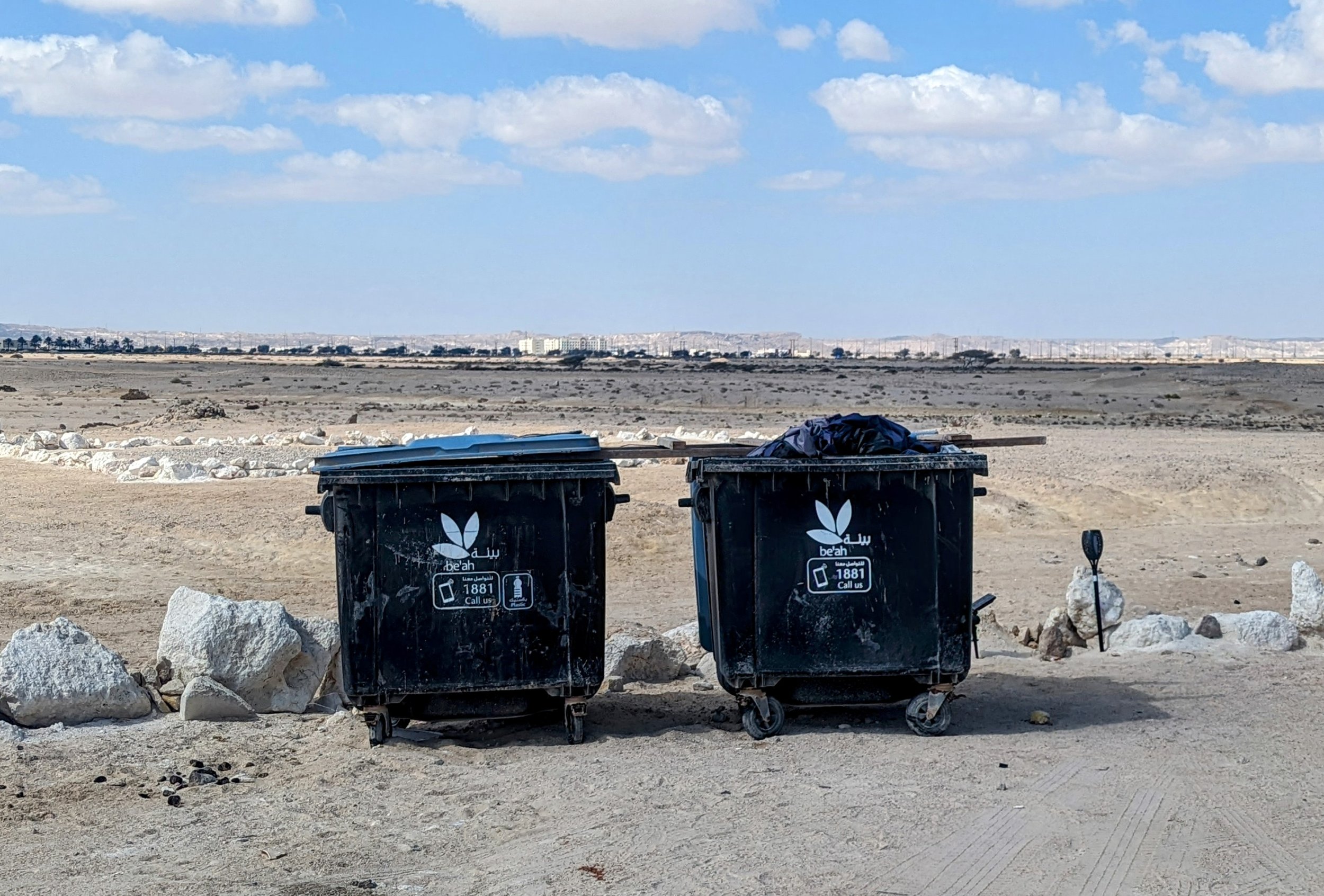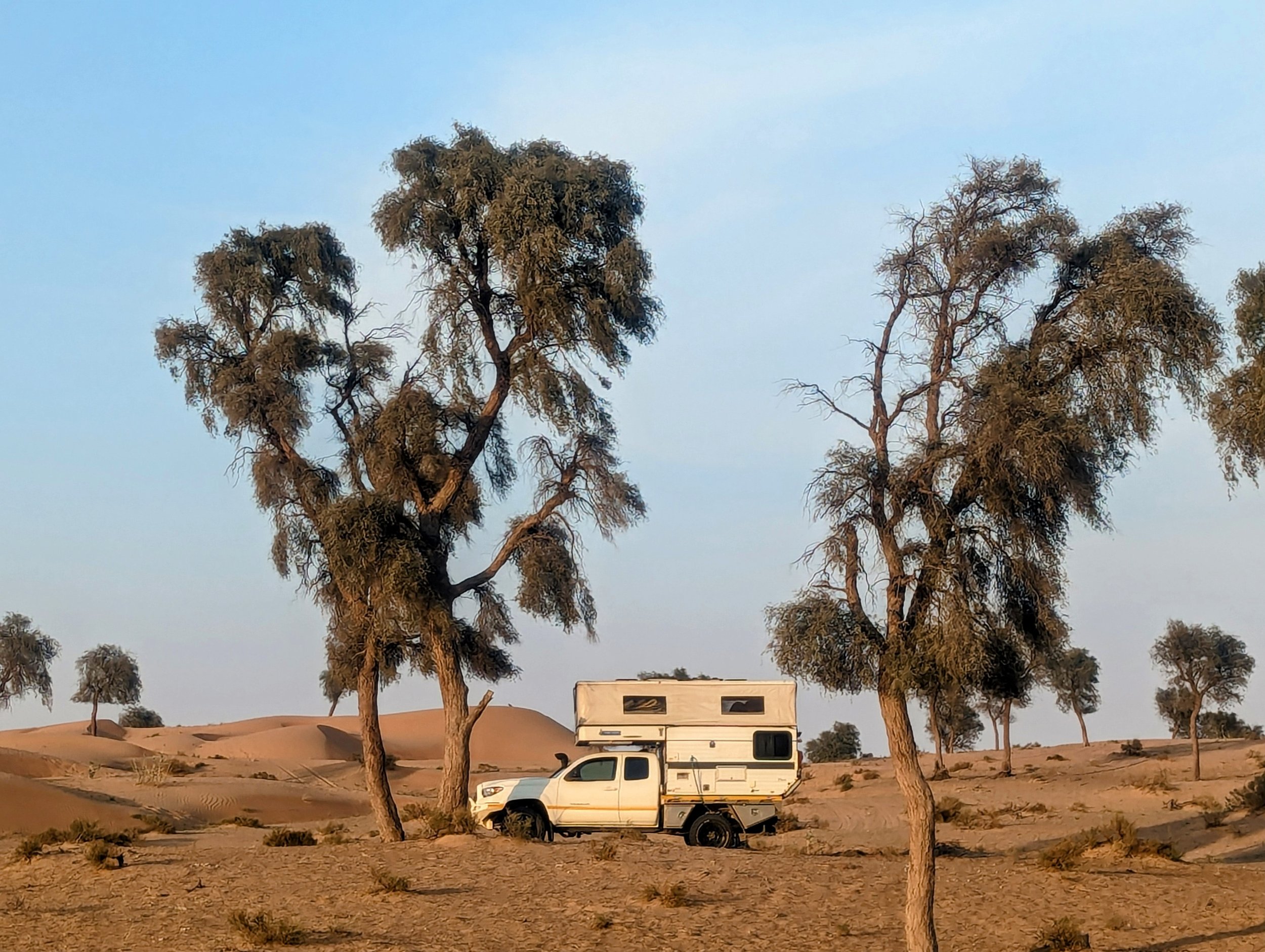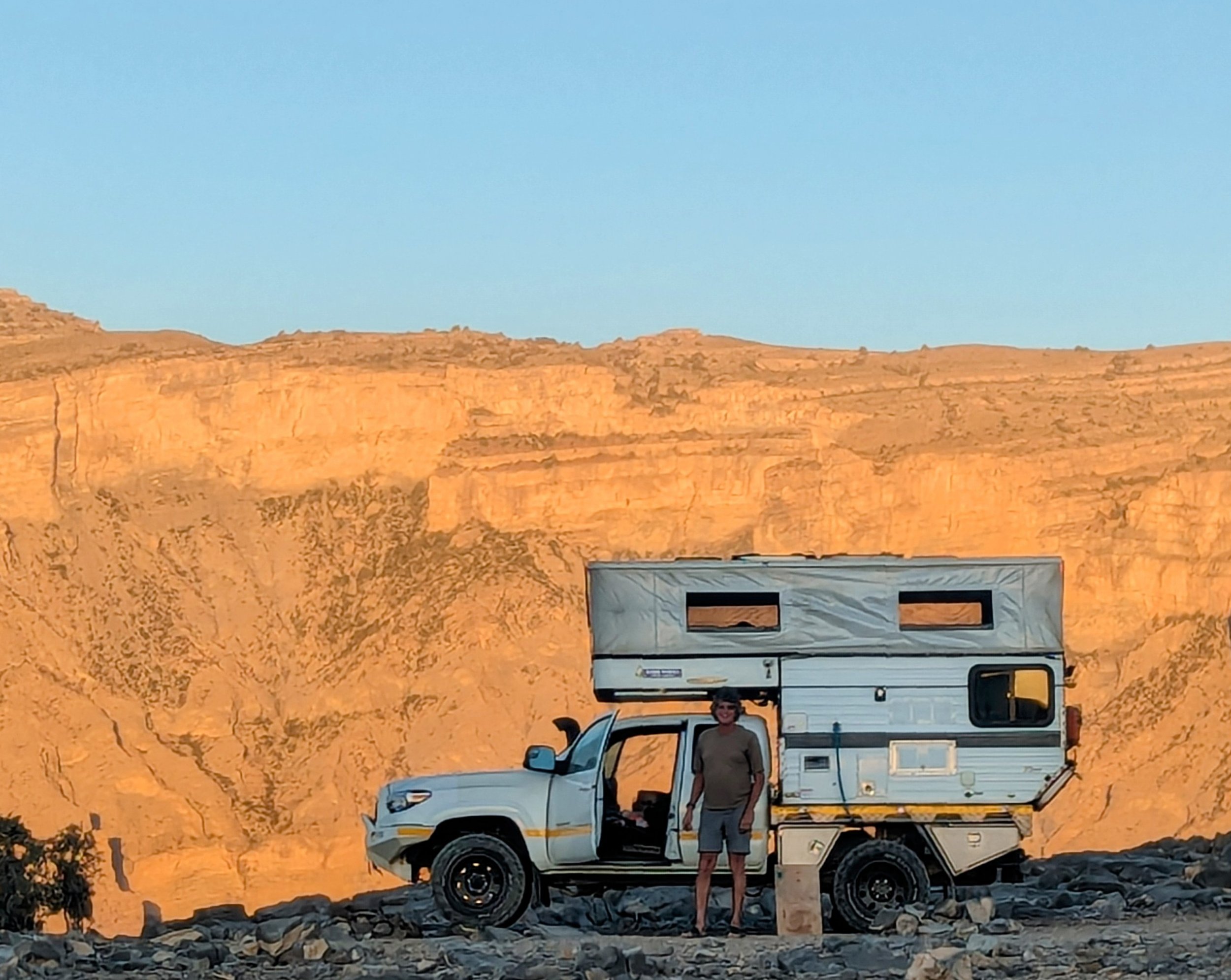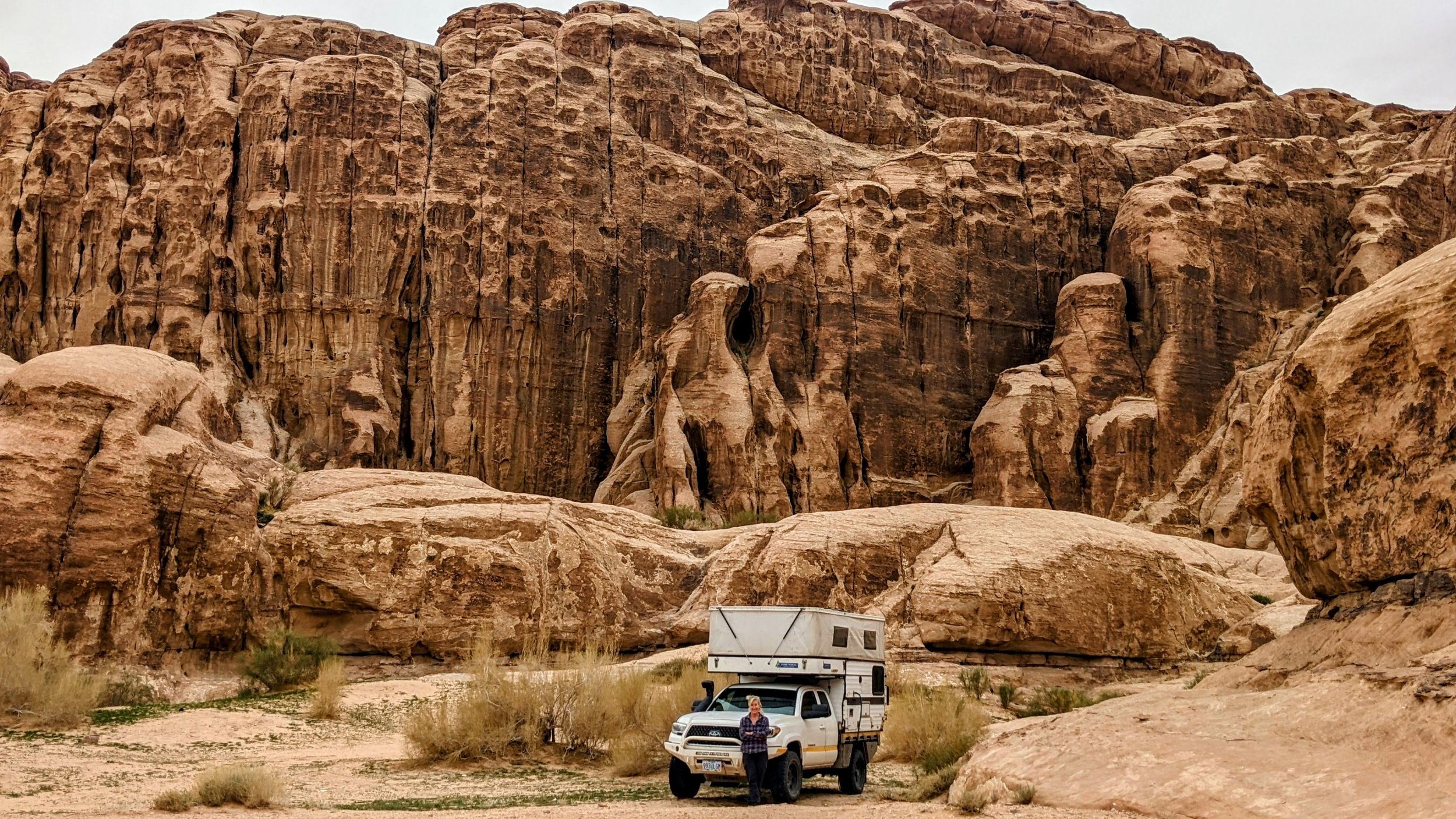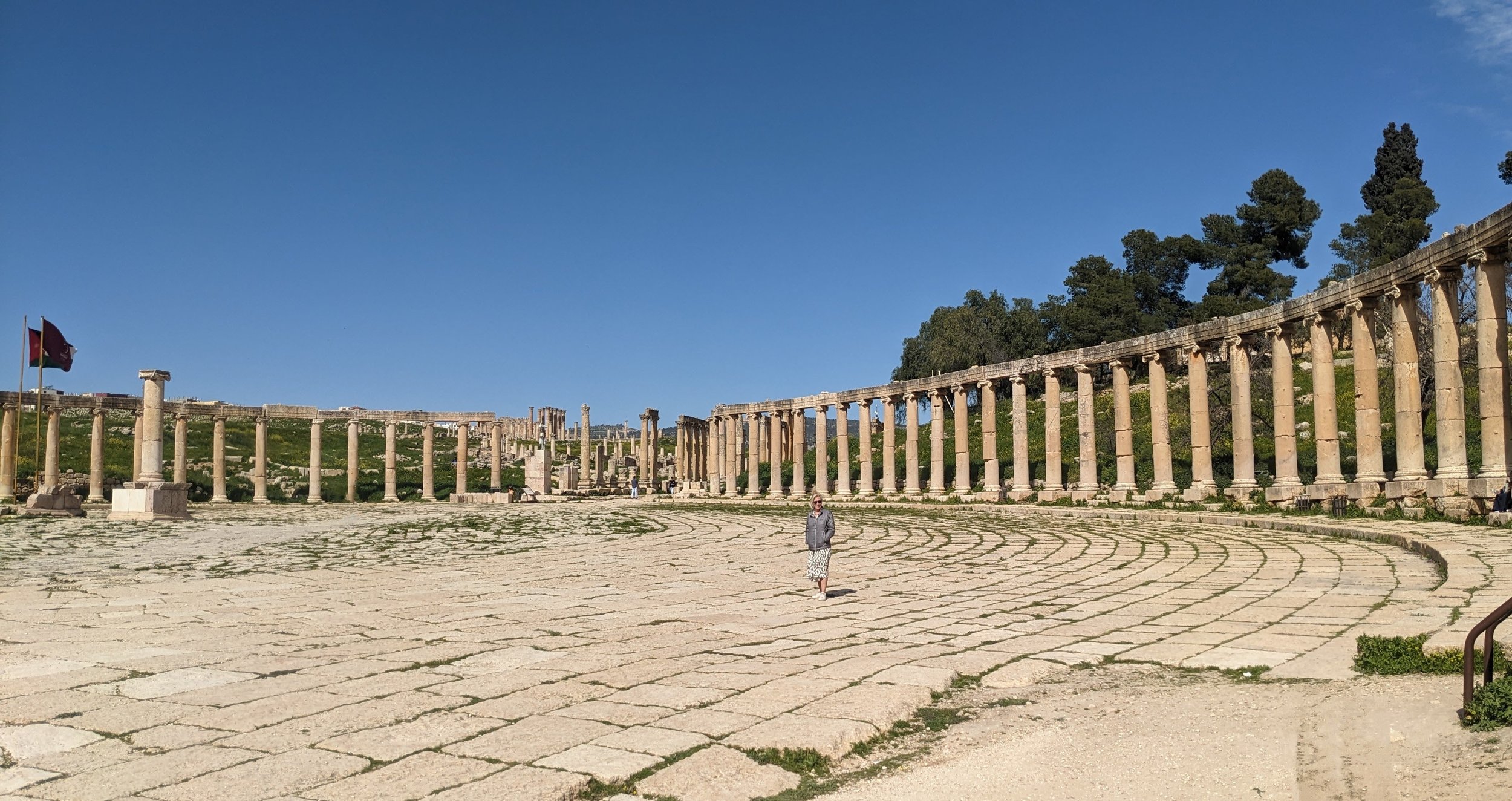Arabian Peninsula: Overlanding Lessons Learned
Driving through Wadi Rum in Jordan
The Arabian Peninsula is perfect for exploring in an overlanding vehicle. Vast, intriguing landscapes, ancient cultural sites and beautiful mountains and coastlines (from the Persian Gulf to the Dead and Red Seas) make for boundless adventure. It is true that there are immense areas of desert and sand dunes, but there is also so much more.
Driving the southern coast in Oman
Resources are readily available, travel is very safe and easy and the big cities are spectacularly clean and organized. In three months we wild camped every night, never paying for a campsite or water. Gas was cheaper than any other place we had been and the food was excellent and varied. People culturally embrace outdoor activities, at sunset near scenic overlooks or the coast it is a familiar sight to see huge family groups having a picnic or a bonfire. In remote areas it is a common to be welcomed with a gift of water and a smile. Language was often a barrier but Google Translate works surprisingly well with Arabic. Below are some of our lessons learned and tips for other travelers.
Our 6200 mile route through the Arabian Peninsula
Visas, Vehicle Fees and Insurance
We were traveling with a Carnet de Passage (CDP) but it was not widely recognized or used throughout the Middle East. (In the Arabian Peninsula, the Carnet is commonly referred to as the “Trip Ticket.”) We were traveling with US Passports and applied for online visas in advance for Oman and Saudi Arabia but for the rest of the countries we handled the entry paperwork at the borders.
For auto insurance, we had a liability policy through TourInsure which covered Oman, United Arab Emirates, Saudi Arabia, Qatar, and Bahrain. Cost was €98 a month. With the exception of Qatar the policy was accepted at all borders. Qatar requires the purchase of its own national policy even if you are already covered. TourInsure does not provide insurance for Jordan so we purchased it at the border.
In general border crossings were professional, if slow. Except for Israel, vehicle inspections were cursory. We do not carry a drone which we know can be problematic and something that officers look for.
Oman
$50 per person for 30 day single entry tourist visa- easy online application, received within 24 hours.
Truck was shipped in with the CPD (from Mombasa, Kenya) and there were no additional fees for entry.
Auto insurance through TourInsure
Exit tax at border 30 dirham each (about $7.50)
United Arab Emirates
No visa or entry fees for us as individuals or the truck. They did stamp in our Carnet but we offered it up thinking they needed it so they stamped it. We are not sure if it was actually required. (This was our first time travelling with a Carnet so we had not yet learned that “if you don’t need it don’t use it.” If you use it unnecessarily upon entry, it just means you have to make sure you track down an exit stamp when you leave)
Insurance through TourInsure
Saudi Arabia
Visa cost $140 each, included mandatory health insurance fee, 90 day multiple entry visa (anecdotally we have heard from other overlanders that the insurance is in reality pretty useless if you actually need it, people have been declined for emergency care at hospitals and had to use their home based insurance).
No Carnet needed, no fee for vehicle, they just registered it at the border
Insurance through TourInsure
We entered and exited Saudi Arabia several times, visiting the countries of Qatar and Bahrain. We finally learned that keeping a picture of our vehicle registration receipt made it easier for everyone (they create it at one border post and then collect it later but our vehicle registration is a difficult process for their system so being able to copy it from a photo is much simpler for them)
Qatar
Free visa on arrival for one month
No Carnet needed, no fee for vehicle
Mandatory national auto insurance, $80 for one week (we were refusing to pay as we already had insurance and after an extended discussion with Andy saying that we would not visit if we had to pay, a supervisor came and said he would pay the fee for us so we would visit the country, not really a recommended strategy but it worked for us)
Bahrain
Visas were equivalent of about $12.50 each for 14 days
Only vehicle fee was $9 bridge toll
Insurance through TourInsure
Jordan
No individual visas or fees upon entry (we had purchased Jordan Passes which waive the visa fee payable upon exit)
Entry fee of $28 for vehicle
VERY expensive insurance at the border - charged $140 for one month. If we were to do it again we would research other options in advance.
Exit fee of $10 per person and $25 for the vehicle
Our first view of the Dead Sea in Jordan
Budget and Resources
Our total daily budget for the Arabian Peninsula averaged $74 a day for the two of us (actually three people when we were in Oman and our son was along). It was one of the least expensive places that we had travelled. Usually gas is our most expensive line item and gas was the least costly we had ever seen at $1.40 a gallon Our average gas expense was $17 a day. This could have been reduced if we did not move on every day which is our normal pattern.
For the first time, groceries came in higher than gas as a line item in our budget at $19 a day for three of us for Oman, and two of us for the rest of the time. We spent an average of $13 a day on hotels (this was really one hotel every week or so in a large city) and $9 on restaurants - which was about one meal every few days.
Dawn’s favorite - falafal in pita bread - about $2
Andy’s favorite - manakish - or Arabian style pizza - $3
Food
As usual we made most of our own food, adding in local flavors. Excellent tasty food and a variety of groceries were widely available. In large cities. We also sought out local bakeries making fresh pita bread and delicious baklava. Large European (Carrefour) and Chinese (Lulu) supermarkets carried a wide range of products - both local and international. Not surprisingly local products (like hummus and pita bread) were much less expensive than imported.
A classic picnic lunch for us - total cost about $4
Water
We were surprised that despite traveling mostly through deserts, clean water was always readily available at no cost. Road side fill stations and local fountains - often at mosques - were always easy to find.
Clean water filling station - but we still purified it through our UV system, using an abundance of caution
Money
We are well accustomed to swapping out currency at every border crossing and it was easy and hassle free on the Arabian Peninsula. Although it was uncommon to see unofficial money changers at the borders, ATMs were widespread and easy to find. We carry a Charles Schwab debit card which does not charge any international fees for cash withdrawals and it worked everywhere. Gas stations, hotels and restaurants all accepted our Chase visa card. In remote areas, it was a good idea to have local currency for small purchases.
Cell Phones/Wifi
Cell coverage in the Arabian Peninsulas was generally excellent, even in more remote areas. With a few mountain terrain exceptions we had full 5G almost the whole time, even wild camping. We bought sim cards upon entry into each country - also easy to find. They typically required a passport registration. Data was relatively cheap to purchase, as an example in the Oman we paid $10 for 5 GB each.
Propane
We carry two propane tanks and a whole host of adaptors and were easily able to fill them in Oman.
Garbage Disposal
Disappointingly, rubbish was an issue in many wild areas. Culturally people were used to leaving campsite garbage on site for future clean up. Immigrant labor was widely employed for cleaning public areas but it was sporadic. But free road side dumpsters were literally everywhere so it was easy for us to save and dispose of our camp garbage.
Free roadside garbage dumpsters are a common site
Alcohol
Traveling through Muslim countries, regulations varied. In general alcohol was somewhat complicated to purchase or illegal and always very expensive so we mostly went dry. In Oman, only local non-Muslims with special permits can purchase it. In United Arab Emirates, alcohol retail stores in large cities will sell to tourists but require passport registration. In Qatar, you can buy a drink in a registered hotel or bar. Bahrain will sell to tourists from special licensed stores. In Saudi Arabia alcohol is completely forbidden. In Jordan you can purchase it in liquor stores. We did not carry alcohol in the truck, partly out of respect for local customs and partly out of a desire to lessen our stress over potential border searches.
Andy quite happy to substitute his favorite, Mountain Dew (very common in the Middle East), for beer. Although alcohol was not sold in supermarkets a large selection of interesting sodas and juices were available.
Language
We strongly recommend downloading an app like Google Translate along with downloading Arabic into the program. This was invaluable to us as outside of tourist areas English is not commonly spoken. In very rural areas, we mostly communicated with smiles and hand gestures. We made sure we could say “thank you” (shokran) and greet people (Salaam-Alaikum) which went a long way to creating a warm interchange.
We had stopped for a picnic in the desert and this family in a pickup with camels drove out to us to ask for air in their tires. The whole conversation was conducted without a shared word in common but lots of smiles and goodwill.
Roads and Navigation
The roads throughout the Arabian Peninsula, along with the rest of the infrastructure, were generally excellent. When we got into trouble it was completely our own fault for attempting something stupid that we shouldn’t have (we are just too dang heavy for deep sand). There are also plenty of opportunities for hard core off roading, but because our truck is heavy we stuck to the easier routes.
Valley road in Oman, even for more remote roads, no pot holes and well painted.
For navigation, prior to visiting a region, we download maps onto our phones in two programs: Google Maps and Open Street Maps. We also use a dashboard mounted Garmin Overlander which has Open Street Maps on it. Once the maps are downloaded navigation (mostly) works offline. In general, with the exception of Saudi Arabian cities, the navigation worked well.
Saudi Arabian city freeways were crazy. They also highly use U-turns for getting people to their desired location. This means all vehicles, including huge trucks are pulling to the center of the freeway to make a U-turn through the meridian to get to where they need to be. In addition, parallel to the freeways run the local access roads and you have to time when you get onto these to actually find your route. All of this is way too much for navigation programs which cannot begin to understand the intricacies of the multi lane system. We have never seen so many U-turn lanes anywhere.
There was also, because of unrest in the region, some instances where GPS was being jammed particularly in Jordan near the Israeli border. We would look at our navigation and all of a sudden see that our “location” was in Beirut, way off course. It caused some frustration with navigation but using common sense and major geographical way points we always found our way.
Typical side road into a wadi campsite
The main road hazard - camels
Attempting to drive into the dunes in Oman (we didn’t make it far and had to turn back)
Getting stuck on an overly optimistic beach venture - Maxtrax saved us
Camping
Wild camping on the Arabian Peninsula was the easiest and most beautiful of any region we had been too. Rarely did we see land or roads posted as “private.” The local cultures value wild camping and it is understood that beautiful areas should be accessible for all. The overall lack of people makes finding a spot on your own easy. We almost exclusively used the app iOverander to help us find places that we know were legal to stay. We also used Google satellite maps and common sense. We did not stay in sites close to peoples’ homes or villages. We sought out places where we were completely out of site.
Occasionally we would be joined by a local family or group, but always with warmth and welcome. Sometimes we would have police (especially along the coast) or locals approach us to find out who we were and what we were up to but (with one exception in Jordan by the Israel border when the military told us we were in a security area) we were never asked to leave.
We quickly realized that many of our favorite sites were in “wadis” - deep ravines with water part of the year.
Camped by Judah’s Thumb in Saudi Arabia - nothing but sand for miles
Wadi camp in Oman
Driving into a wadi in Jordan to make camp
Edge of Liwa Sand Dunes, United Arab Emirates
Oasis camp, United Arab Emirates
Dune camp, United Arab Emirates
Mountain top cliff site, Jebel Shams, Oman
The only real camping hazard - scorpions. They like to hide under rocks, apparently they deliver a nasty mostly non-lethal sting but luckily we avoided being stung.
Security and Safety
The Arabian Peninsula is incredibly safe. It was a relief, coming out of Africa, to feel like we could safely leave the truck parked anywhere and we could wander city streets at night. The countries share a culture of respect for law and order. Also, the majority of the populations are immigrant workers who adhere to a strict code of conduct in order to keep their jobs.
We were also highly aware that we were Americans in countries where our government had complicated relationships with the local ones. Like Africa, we were clearly non local visitors everywhere we went. We mostly felt welcomed, with the exception of Dawn having some difficult interactions with men in Saudi Arabia (more in our blog on that page). But we always felt safe.
In general people treated us as individual visitors, outside the realm of politics. One gentleman in Oman offered to lead us to a place to fill our propane tanks. He asked where we were from and we said “the USA.” He smiled and said “I am not happy with your government but you are still welcome.”
Weather and Clothing
We are convinced that we visited the Arabian Peninsula at the very best time (at least for us). We were there January - March. Popular tourist sites were not crowded yet. Temperatures were mild - mostly 70’s during the day dropping to the 60’s at night. Most days were sunny and clear. Although there were some rain warnings (alerts come through your local phone service about rain) rain was mild and infrequent. This was especially important for venturing into the wadis which are not safe when it rains due to flash flooding.
Gazing up in awe at a spectacular mosque ceiling
The mild weather made it especially easy to dress appropriately for Muslim countries. Andy wore long pants and t-shirts, and only on a rare day when we were out in the desert on our own, shorts. Dawn wore floor length loose fitting dresses. If the dress was short sleeved she kept a lightweight long sleeved shirt handy for when we were around people. When visiting a mosque, she wore scarf over her head. For the most part, we felt accepted as non-Muslims and no one ever commented on our not wearing traditional Muslim clothing. Other overlanding women we know bought abayas - the traditional black head to toe dress commonly worn by women - but Dawn did not feel like it was necessary for our travel as tourists.
People and Culture
We barely scratched the surface of exploring the local cultures. Traveling as we do, moving daily, does not make for building relationships and opening conversations. For us, this is a draw back to how we travel. Most of our learnings are from observation and brief interactions.
Although each of the countries we visited on the Arabian Peninsula had its own unique personality, there were some key commonalities. Most obviously, all the countries are predominantly Muslim. In addition to dressing modestly, some other customs were important to adhere to. We refrained from all public displays of affection which is generally frowned upon and Dawn did not smile at or greet men. In general, men and women conduct fairly separate lives and cafes and restaurants are commonly filled with men enjoying coffee and social time. Women are more out of site except for in malls and grocery stores. Most waiters, hotel clerks etc are men.
The other unique feature of the culture on the Arabian Peninsula is that although the leadership and the wealth is held by the national people of the country (for example, “the Emirati” in the United Arab Emirates) the majority of the people living in the countries are foreign workers. This creates a clear dichotomy with the local nationals receiving major benefits in the form of free education, high paying jobs, free homes, land and healthcare and the immigrant workers living much more modest lives. We actually had more conversations with the immigrant workers than the actual people of the countries.
Omani men in the common traditional dress
Cities
The major cities of the Arabian Peninsula are extraordinary. Governments have invested oil revenue in sleek infrastructure, interesting architecture, parks, promenades and public art. The museums are state of the art, interesting, informative and reasonably priced or free. The cities are clean and safe, dotted with excellent restaurants and cafes with everything from affordable street food to fine dining. Typically we preferred to explore the old sections with their small, winding streets and central souqs where you could bring your bargaining skills and do business the same way people have been for centuries.
Although Oman was one of our favorite countries, the big cities there were not some of our favorites. Salalah and Muscat had newer infrastructure and felt more modern and generic. Muscat was difficult for us to navigate in the truck - we tried to go to the old souq but could not find any parking at all so we moved on.
The cities that stood out for us were Dubai - (just over the top and fascinating, built with oil money with the express purpose of attracting international tourists for shopping and dining) Abu Dhabi - the older capital of the United Arab Emirates, Doha in Qatar and Amman in Jordan.
Because it is too hot to be outside for much of the year, mall culture is huge. Big cities have enormous malls which people navigate with golf cards. Malls in Dubai include a ski resort, huge underwater playground and every designer shop you can think of.
Central plaza in Dubai, featuring the towering Burj Khalifa, the tallest building in the world.
Enormous fountain in the Dubai Mall, the largest mall in the world
In general what made us love a city was it being walkable, having an interesting blend of contemporary and historical architecture and informative cultural sites to visit (museums, mosques, forts etc). Since we used cities as re-supply points we were also looking for easily accessible supermarkets and malls. Luckily, with the exception of Muscat in Oman and Riyadh in Saudi Arabia, we found navigating and parking in the cities on the Arabian Peninsula to be easy.
Typical waterfront walking promenade, this one is in Sharjah, the neighboring emirate to Dubai
The Louvre Museum in Abu Dhabi - one of the best laid out museums we have been to, a fascinating journey through time and history with intriguing art and artefacts
Beautiful Sheik Zayed Grand Mosque in Abu Dhabi
Inside the central palace of Sheik Zayed Grand Mosque
Presidential Palace in Abu Dhabi, now a luxury hotel
And across from the palace, the modern skyline in Abu Dhabi
Doha, Qatar skyline with traditional dhows in the foreground (now used more for tourists than fishing)
Another beautiful promenade, with new Doha across the water
Public art on Doha waterfront, the oyster representing the traditional pearl diving industry
Old souq area of Doha, Souq Wakif
Central plaza in Amman, Jordan, featuring old Roman theater
Amman blended the old and new easily
Waiting for street Shwarma in Amman, Jordan, some of the best food we found in the Middle East was in Amman
Highlights, or Favorite Places
In general, Oman quickly leapt to our overall list of top ten countries (out of almost 100). We absolutely loved our time there. The gorgeous and varied scenery won our hearts. It also had interesting cultural sites to teach us about the history of the area. But for pure archeological sites, Jordan was hands down the most amazing place. Visiting Petra and Jurash were Arabian Peninsula highlights for us. Of the countries we went to in the Middle East Oman and Jordan gave us our favorite experiences, but we also had highlights in other countries too. (See individual country blog for many more details.
Oman
In general, for Oman the joy was just in finding our own remote camping spots and areas to explore, but a couple of areas stood out.
Driving the southern coast - we went west from Salalah toward Yemen, then u-turned back through Salalah and drove the coast all the way to Muscat. In retrospect, we would have spent more time in the south on this route, as you approach Muscat areas become much more crowded with local campers
Southern coast beach site, Oman
Hiking and camping in the Jebel Shams mountains
Jebel Shams Boardwalk Trail
United Arab Emirates
Hiking in the Jebel Jais mountains
Dubai - observing the extravagance!
Hiking in the Jebel Jais mountains
Qatar
Visiting Al Zubara and learning about the history of pearl diving
Walking the promenade and old streets of Doha
Al Zubara ancient pearl diving village ruins in Qatar
Saudi Arabia
Desert camping (so much space!) - exploring vast dunes and fascinating rock formations
Hiking at the Edge of the World
Visiting ancient Hegra
Exploring the cliffs at the Edge of the World, Saudi Arabia
Magnificent tombs carved into the cliffs at Hegra, Saudi Arabia
Jordan
Another country with so many highlights, we only would not rate it as high as Oman as it was not quite as remote and rugged. Tourism is a little more developed - which made it easier but also a tiny bit less adventurous.
Diving in the Red Sea outside of Aqaba
Camping in and exploring Wadi Rum
Bobbing like corks in the Dead Sea
Visiting iconic Petra - and all time highlight for us, marveling at talent of the ancient Nabateans who built the city
Visiting the extensive Roman ruins at Jerash
Wadi Rum camp
Garden Temple at Petra, Jordan
The Treasury, Petra, Jordan
Roman ruins at Jerash, Jordan
Jerash, Jordan
Well, that concludes our overview of the Arabian Peninsula. We unfortunately did not visit Iraq, a country that we have heard fantastic things about but with our US plated vehicle and the current political situation we did not think it was wise for us. We almost added Kuwait, but in the end opted for more time in Jordan.
Overall it was a fantastic experience and we are so glad we added it to our route. Thank you for reading and as always, we are happy to answer any follow up questions you may have. Safe travels out there!









